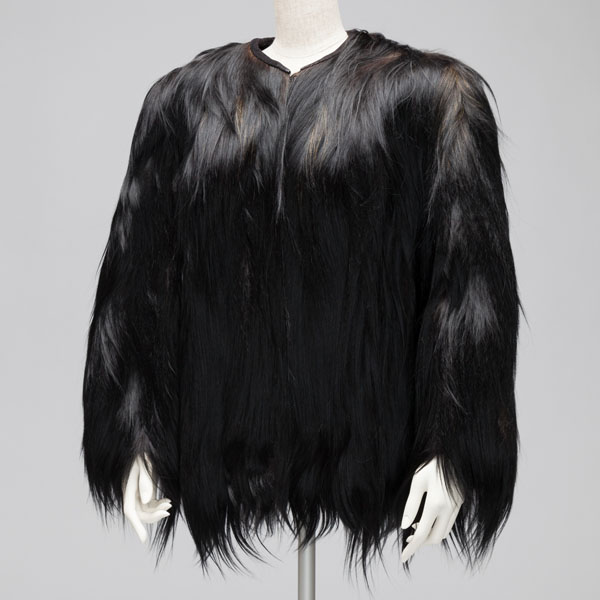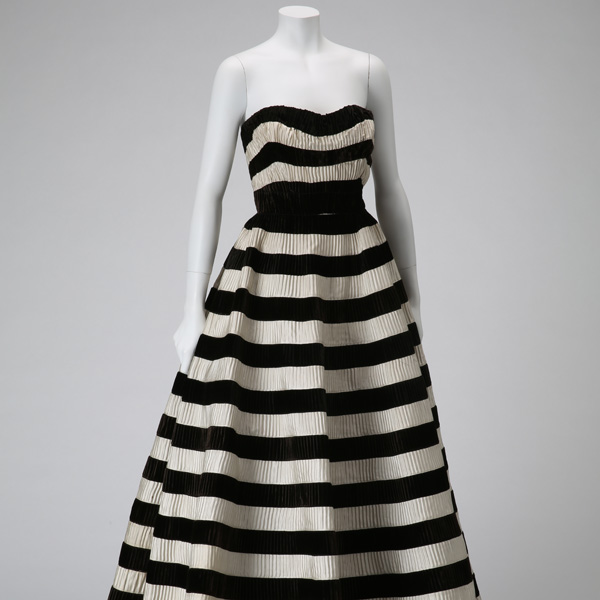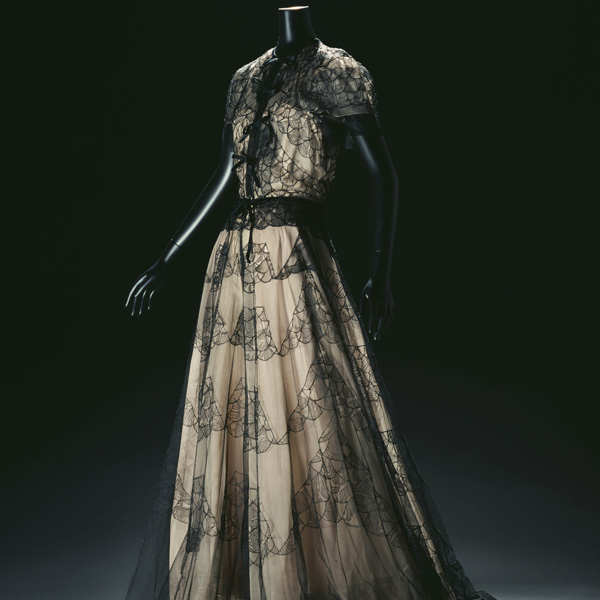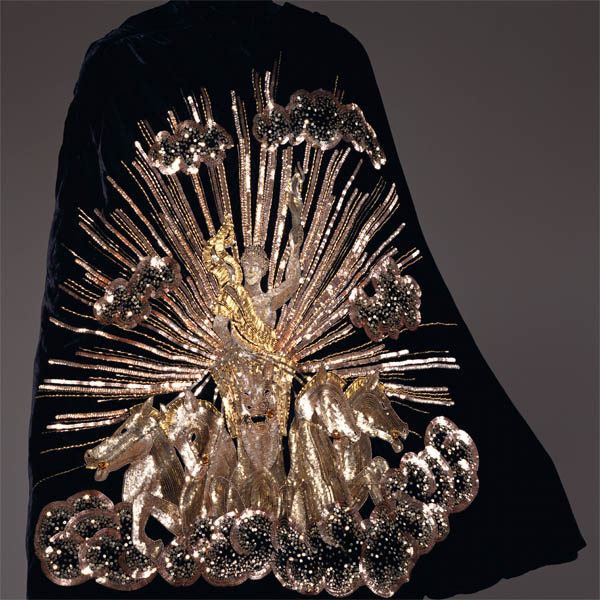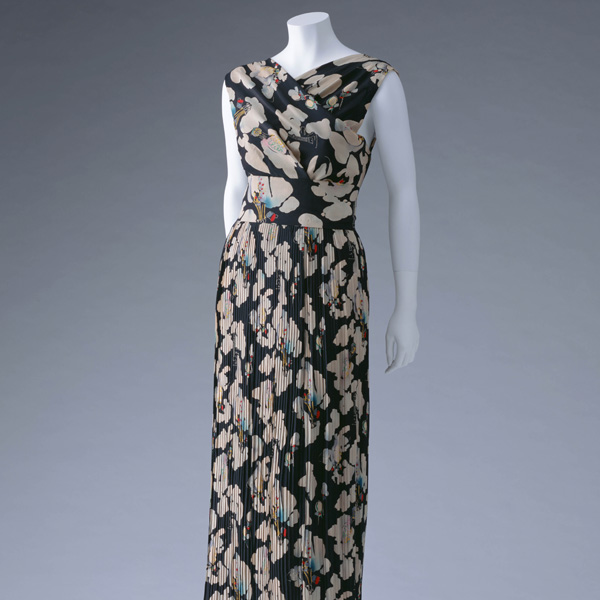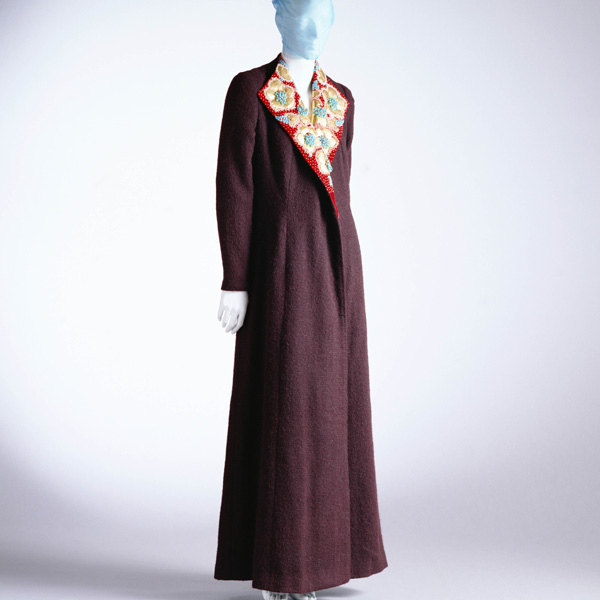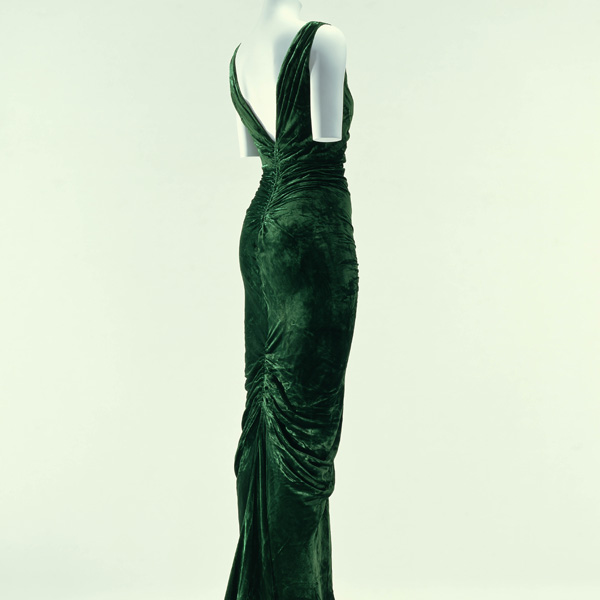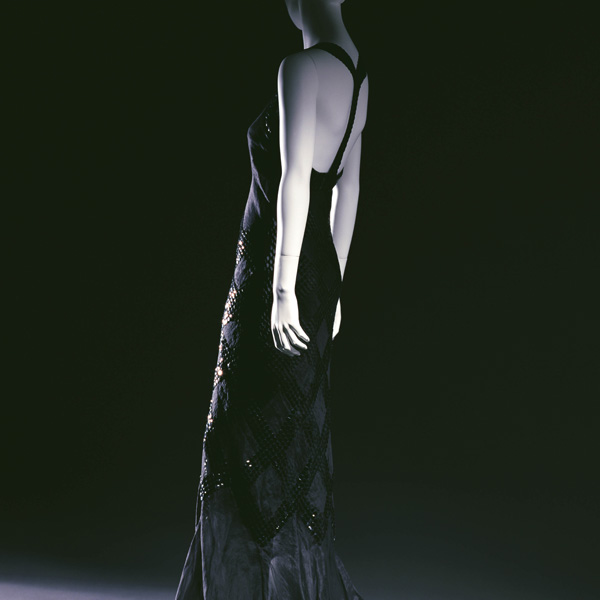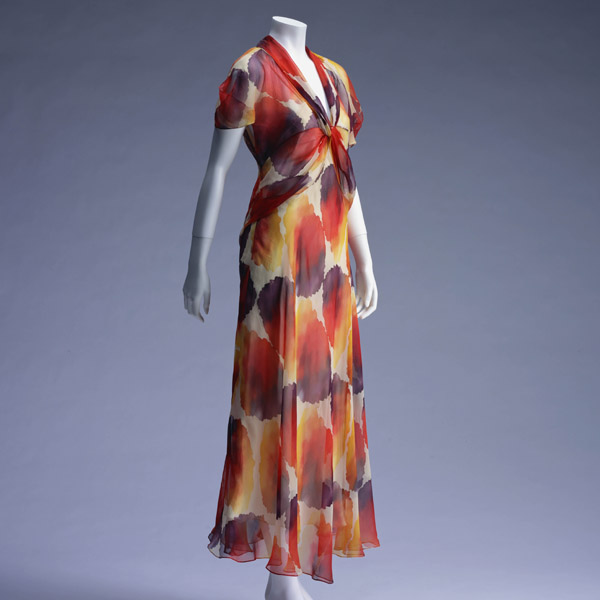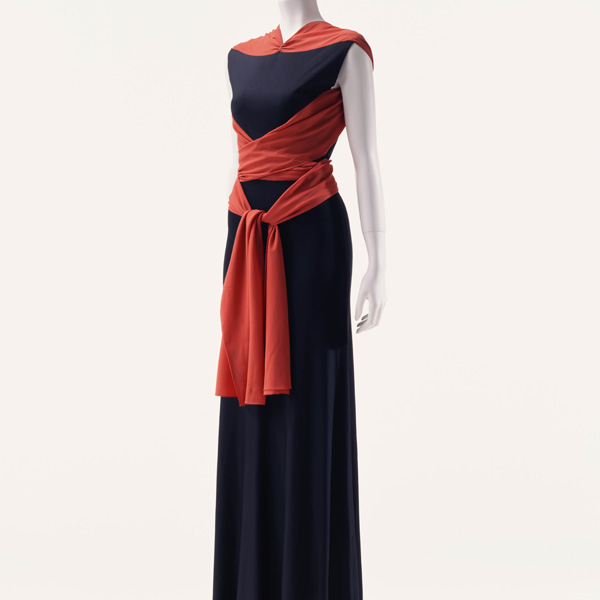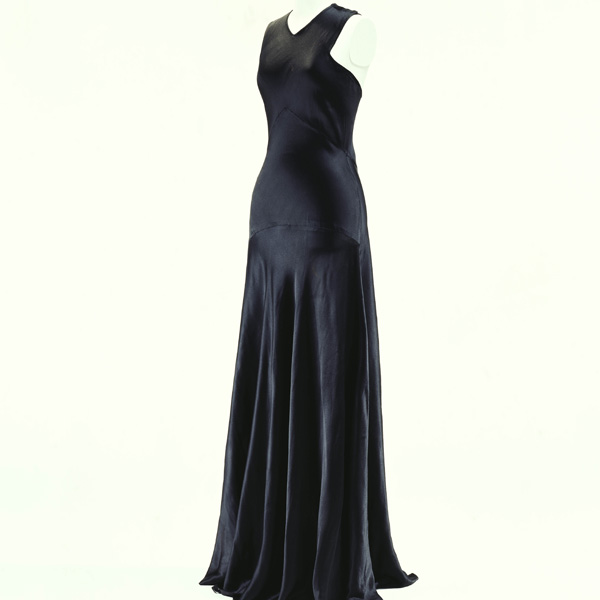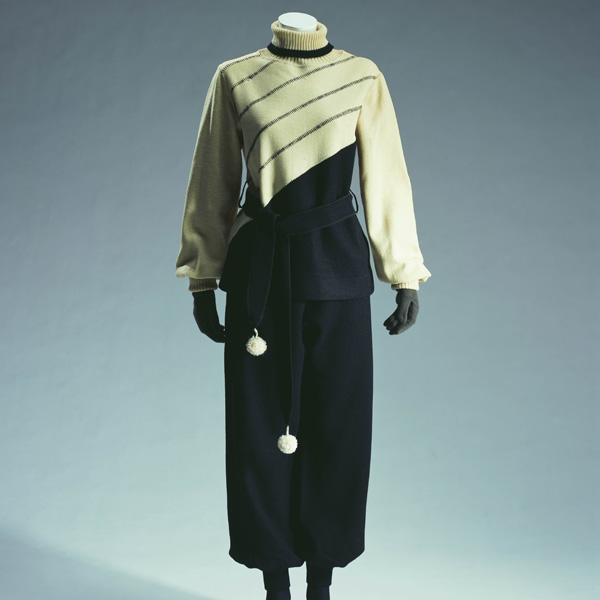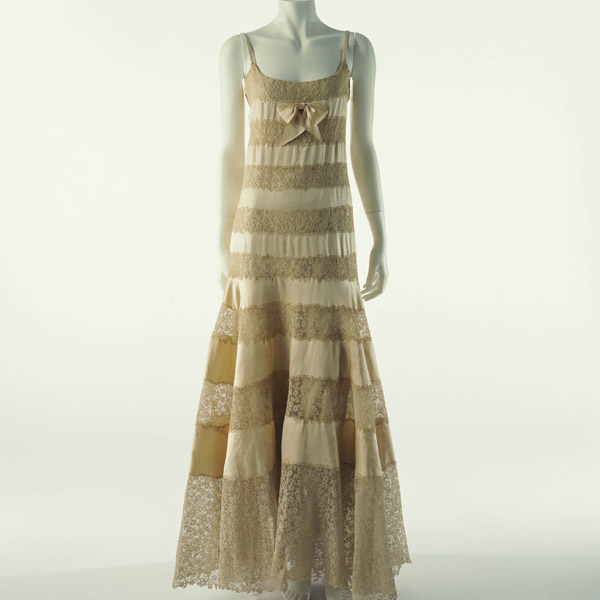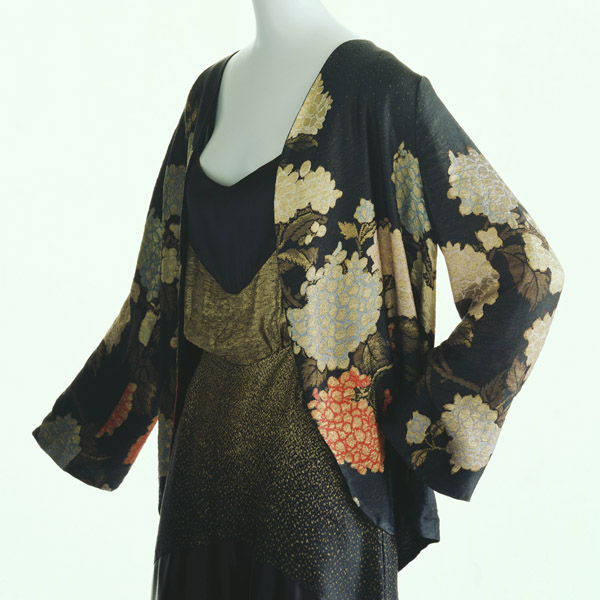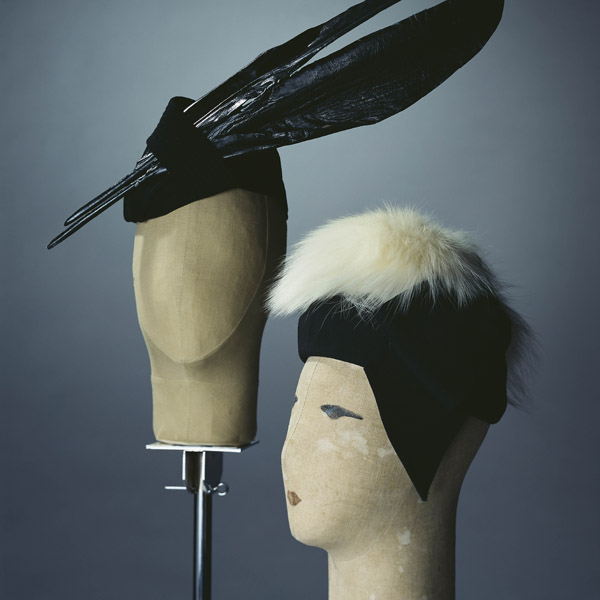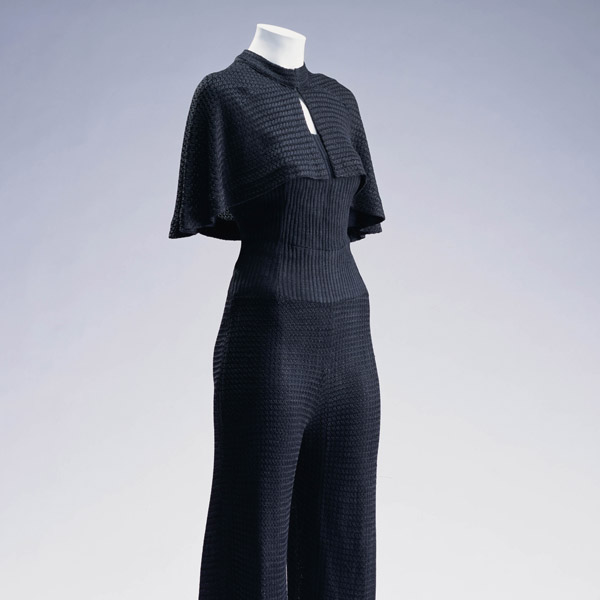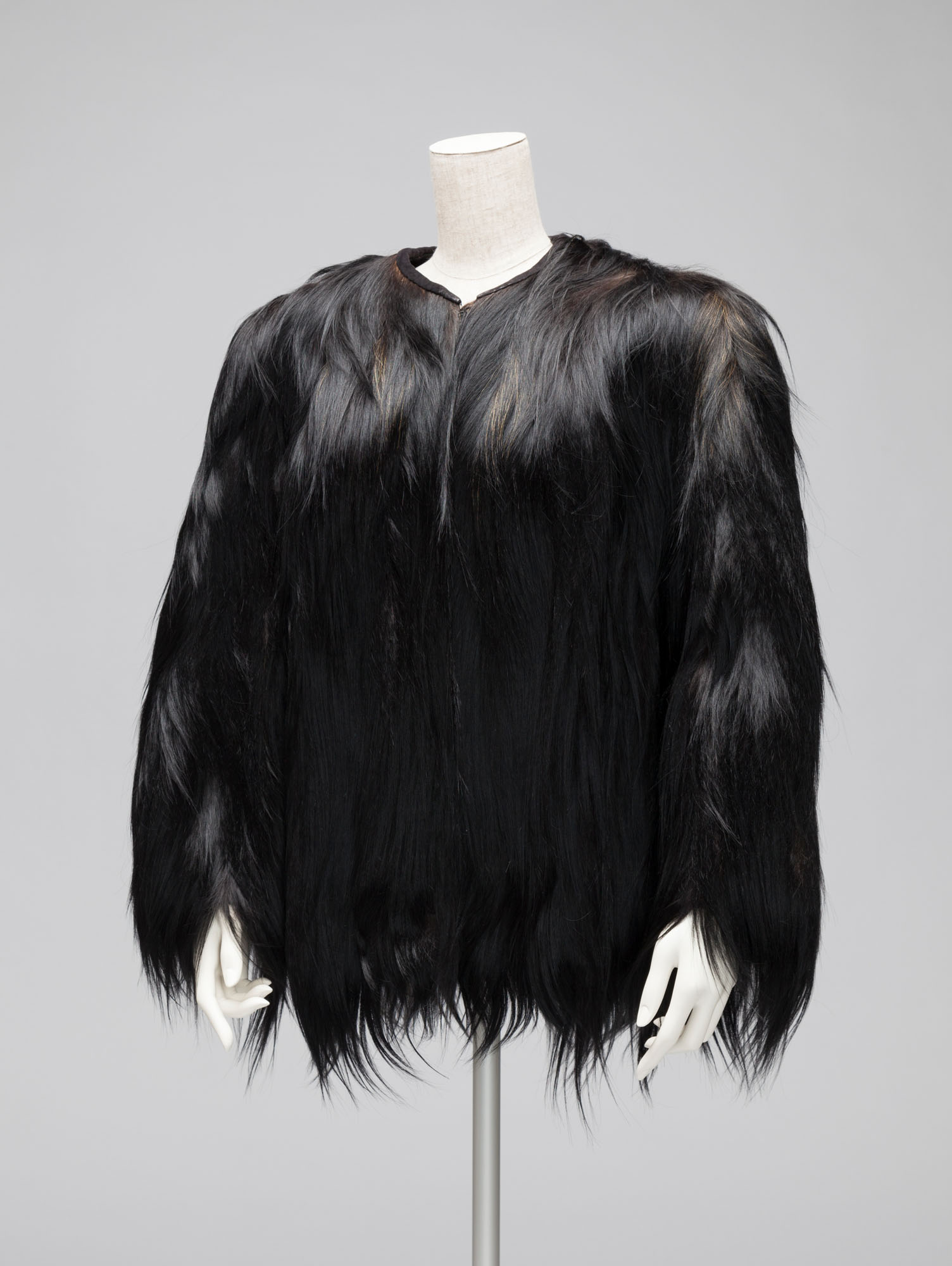
© The Kyoto Costume Institute, photo by Mai Narita
You can enlarge by putting the mouse cursor on the image.
Jacket
1930s
- Brand
- Georges Knies
- Label
- GEORGE KNIES furrier at 315 S. 13th ST. PHILADELPHIA
- Material
- Black long-haired fur of colobus.
- Credit Line
- Gift of Ms. Jun I. Kanai
- Inventory Number(s)
- AC10991 2003-26
This jacket is made from glossy long-haired fur resembling black human hair. Whether it was due to deterioration over time, or the effect of the chemicals used during the manufacturing process, a DNA test conducted on the fur was unable to identify the animal. However, considering the history of fashion along with an examination of the fur’s cuticle structure and the shape of the medulla points to the possibility of the fur belonging to a colobus monkey genus.
Primate fur was being traded globally by the Middle Ages at the latest. It was, in particular, the black and white fur of the Abyssinian colobus (Colobus guereza) used locally in ceremonial wear, that was exported to the West by Arab merchants and highly prized. Colobus fur was not only used in coats and jackets, but became popular as muffs during the 19th century, with 175,000 colobus fur pelts exported to Europe in 1892.
There was a resurgence in the popularity of Colobus fur during the 1930’s as outerwear, as in this example. The monkey fur boots (summer 1938) designed by Elsa Schiaparelli, famous for her collaborations with Surrealist artists, caused a sensation. According to an anecdote, guests dining at the Hotel Ritz one evening were practically climbing onto their chairs to get a glimpse of a woman who was wearing an embroidered monkey fur cape designed by Schiaparelli. There was often a correlation between the scarcity and phantasmal quality of unusual furs and the wearer’s desire to stand out.
 Digital Archives
Digital Archives